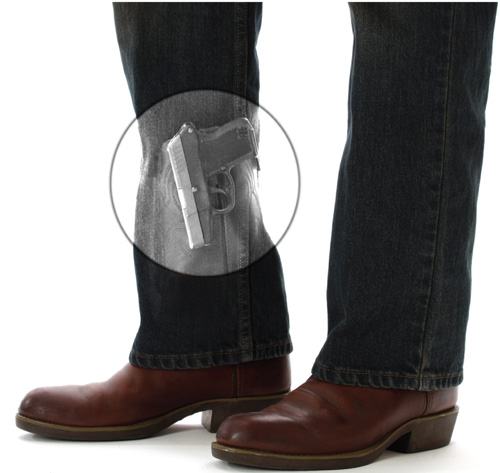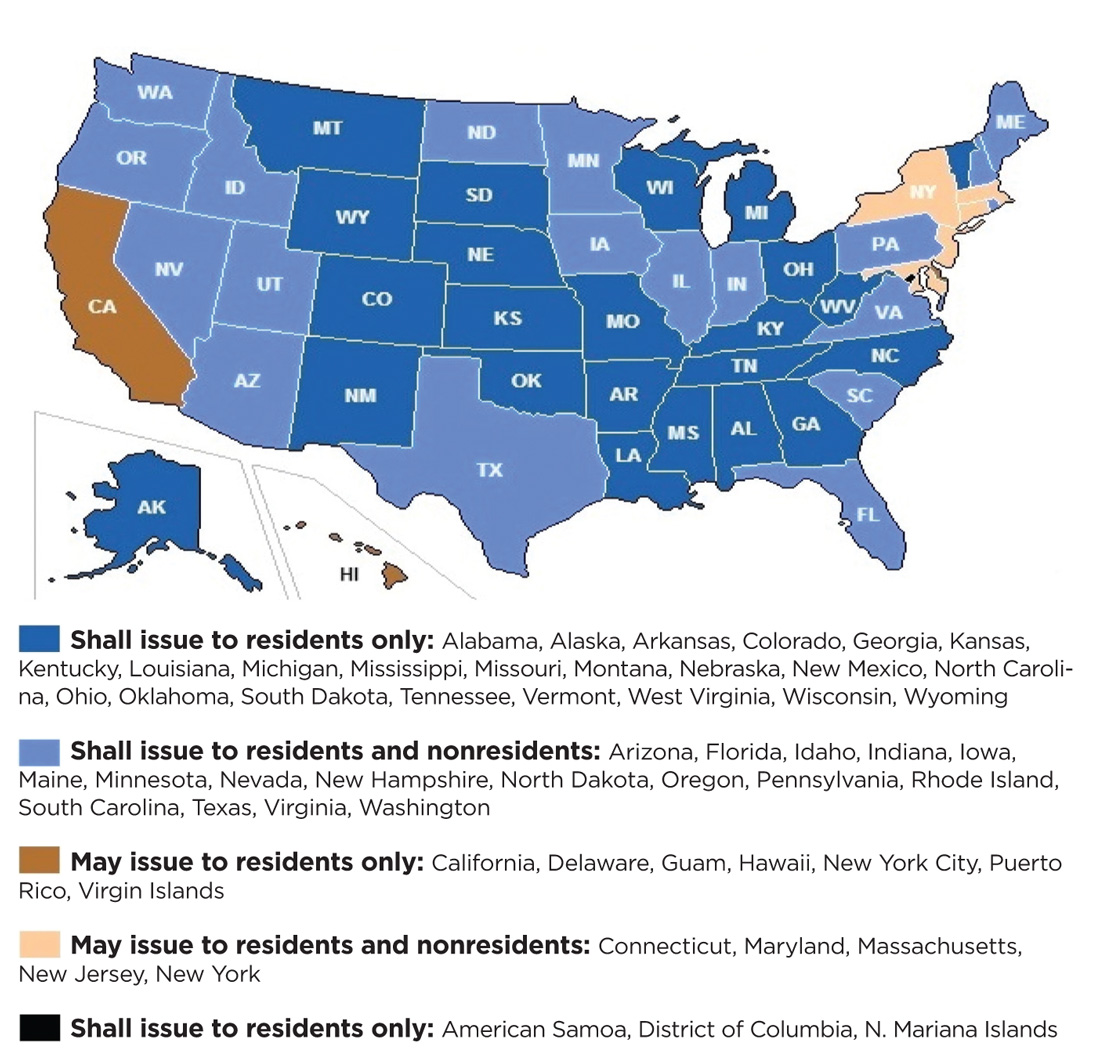News
The Law On Concealed Weapons What Vending Operators Need To Know
June 18, 2015
TAGS: vending, Heather Bailey, office coffee service, amusement operators, route drivers, concealed weapon, Smith Amundsen, Pot-Smokin, Gun-Carryin' Drivers, Playing It Safe, gun laws, when employees carry guns |
Playing It Safe: Introduction
 |
Heather Bailey |
Heather Bailey, a partner with Chicago-based law firm Smith Amundsen, set forth dos and don'ts to help operators abide by new laws and educate and accommodate their employees. Bailey addressed the topics at the National Automatic Merchandising Association's Coffee Tea and Water show in Dallas.
The most recent CTW attracted 750 industry professionals focused on building their total refreshment service businesses in what has become the industry's fastest-growing segment. The educational program, based on topics recommended by NAMA members, was designed for sales executives and senior managers, as well as owners.
Bailey's presentation, titled "Pot-Smokin', Gun-Carryin' Drivers: The Law on Medical Marijuana and Carrying Concealed Weapons," explored a timely topic on the minds of today's route operators who face greater liabilities amid an increasingly confusing legal landscape. In our "Playing It Safe" series, Vending Times senior editor Emily Jed reports on guns, pot and operators in two articles. Click here for Jed's report on marijuana usage laws.
Understanding The Law On Concealed Weapons
As business and property owners, vending, OCS and amusement operators need to know the risks, rules and liabilities surrounding their employees carrying concealed weapons, not only in their own buildings and vehicles, but also in the locations they serve. Not unlike the laws governing medical marijuana usage, interpreting legislation, or lack thereof in many states, is not always a straightforward task.
 Historically, gun laws have allowed individuals to carry and transport unloaded firearms, according to Heather Bailey, an attorney specializing in workplace law. "Concealed-carry" laws expand the right to carry firearms by allowing individuals to carry loaded firearms on or about their bodies in public as long as they're concealed.
Historically, gun laws have allowed individuals to carry and transport unloaded firearms, according to Heather Bailey, an attorney specializing in workplace law. "Concealed-carry" laws expand the right to carry firearms by allowing individuals to carry loaded firearms on or about their bodies in public as long as they're concealed.
What these laws mean for workplaces is that employees, customers and the public may have a concealed-carry license or be in the process of obtaining one.
"What position will you take regarding firearms and other weapons, concealed or otherwise?" Bailey asked operators. "If you regulate, who are you regulating -- employees, customers or the public, or all of the above? Some operators want their drivers carrying weapons; some say 'no way.' You need to know your position and the law."
Among the actions for operators to consider are implementing handbook and policy changes regarding weapons, and instituting workplace violence and search policies. But if a business is going to prohibit firearms entirely on the premises, how will it communicate and enforce that mandate?
Bailey explained that states have addressed "concealed carry" either by allowing it through regulations, or by not having any rules that prohibit it.
The types of concealed-carry laws are as follows.
» Shall Issue: State must issue if the applicant meets the license requirements.
» May Issue: State "may issue" if license requirements are met, or if "good cause" is shown, giving the state more discretion.
» Unrestricted: Permit is not required.
State laws vary on designating areas where concealed carry can be prohibited. Some make the distinction between prohibiting concealed carry by an employee, and forbidding the public or customers on the business's property. Other statutes include specific sections that address prohibited areas, but not employers' rights, while others address both. Meanwhile, some states, like California, cause uncertainty for employers and businesses by not having any law that allows prohibiting concealed carry on properties.
Many of the state laws create confusion over who can prohibit concealed carry on the property (e.g., only the property owner). To clear up any uncertainty, Bailey suggested that landlords and tenants address who has the authority to make concealed-carry decisions in the lease or contract, or an addendum to it.
When looking at new properties, the lawyer advised operators to make sure they are aware of whether there's power to control if concealed carry is allowed, and also whether the operator or landlord can prohibit it in the parking lot.
Many states have exceptions. Even if concealed carry is prohibited on a property in these states, it's allowed in the parking lot to a person within a vehicle, Bailey explained. In such cases, the firearm may be stored in the vehicle. It also may be carried in the immediate area surrounding the vehicle, only for the limited purpose of storing or retrieving it before exiting.
Such exceptions generally require that, when stored in a vehicle, the firearm must be in a glove compartment, console or trunk -- out of plain view -- or in a locked container.
Bailey explained that states generally recognize and prohibit concealed carry and firearms in areas prohibited by federal law, which includes not only on the property, but also in the parking lots. Prohibited federal areas include post offices, federally run courthouses and prisons, and federally owned, leased or managed buildings. Vending and OCS operators serve many such sites.
"Know your contracts on federal premises. Understand that your drivers can't carry weapons there," she stressed.
Signage Rules
Most states require signage in prohibited areas to be a certain size, generally 5" x 7" or 4" x 6"; the majority of them use a uniform symbol (see page 27), but others, like Texas, require specific language. Signs should be posted at the entrance of the building, premises or property. While laws may not explicitly require it, Bailey advised that employers post signs at all entrances.
 |
SIGNAGE SAMPLES:Most states require signage in prohibited areas to be a certain size, generally 5" x 7" or 4" x 6" -- and the majority of them use the uniform symbol. |
Risky Business
While no business owner expects tragedy to strike at home, between 2011 and 2012, homicides from intentional workplace shootings increased from 365 to 375, according to the Bureau of Labor Statistics. Some research indicates that in 2013, homicides in the workplace increased by approximately 50%, attributed in part to the economic recession. "That's just deaths, and not injuries and emotional trauma," Bailey pointed out. Physical and emotional trauma can result in the need for therapy, counseling, wage replacement and possible civil litigation, which can impose huge costs on employers.
Bailey explained that people with concealed-carry licenses will be able to transport concealed weapons in non-prohibited areas; allowing someone to do so should not create liability. However, failure to enforce a policy could incur liability. Having a policy, but not having a metal detector, security or other active measures to enforce it, is one such example.
A major area of concern is that courts generally recognize that employers may be liable to a third party if they knew or should have known of an employee's propensity for violence, and that employment may create a situation in which violence would occur. An employer who does not enforce its policy -- for example, by taking no action to address an employee complaint about "threatening statements" -- is wide open for liability, Bailey said.
"If an employee threatens to shoot people in the workplace, you want to be protected as an employer," she said. "You have to [explain your policy regarding] threats in your handbook. A lot of people go from route driver to management and are not trained in this behavior and safety in the workplace. If your employee brings out a gun, the rules in your handbooks become very important."
Lawsuits against employers for workplace shootings are a very serious concern against which operators should take every measure to protect themselves. Examples include the non-employees filing a lawsuit against a company for injury or death related to a workplace shooting, or employees filing against their employer for negligence, among other tort claims.
Working in employees' favor should workplace violence arise is the Occupational Safety and Health Administration requirement that businesses maintain a safe environment.
"Depending on circumstances, workers' compensation may be the sole avenue of recovery for employees injured in the workplace as the result of a workplace shooting," Bailey noted. Workers' compensation laws vary from state to state, but the legal expert said that generally there must be some causal connection to the workplace. The exception is that state workers' compensation boards have refused to provide benefits in cases where the animosity or dispute that caused the shooting was based on domestic or private life and had no relation to work. However, Bailey explained, if the employment increased or contributed to the risk, then the injury could be compensable under workers' compensation.
Some states address owner versus employer liability; others do not. In Wisconsin, for example, a person who does not prohibit an individual from carrying a concealed weapon on his property is immune from any liability arising from that decision; the same holds true for employers who do not disallow employees from carrying concealed weapons.
"That's great in Wisconsin, but what about your state? Should you prohibit it in the workforce because you're not immune?" Bailey pondered.
In states that lack regulations addressing employer liability, including Illinois, there are additional concerns, including offsite meetings and activities, field staff and traveling employees, company vehicles and personal cars used for business.
"A salesperson may use a personal car and be involved in a drive-by shooting," instanced Bailey. "What does your handbook say? Your liability is reduced if the handbook said the gun was prohibited."
Insurance Savvy
Bailey recommended that operators check their commercial general liability and workers' compensation insurance to understand its coverage parameters, especially if they allow concealed carry and an incident occurs involving a weapon.
"If you allow concealed carry, whether you can get coverage may depend on your insurance provider and situation," Bailey pointed out. One example she cited was an insurance company that refused to provide general liability insurance to Kansas school districts that decided to allow concealed carry in their buildings.
Potential issues and claims operators face around concealed carry include charges of discrimination against gun owners, which is prohibited by some state laws. Additionally, Second Amendment violations are an evolving area of law that requires a balancing of rights.
Although courts have been ruling in favor of employers, it depends upon the state. "You just want to have a policy in your handbook," she reemphasized. "You don't want to know they have a registered license; then you can't discriminate."
Policies And Procedures
If a business wants to ban concealed carry, its prohibition must be in line with applicable state laws, Bailey emphasized. That includes determining what signage is required and where to put it. It also involves updating handbooks and policies, and educating supervisors and employees on policies and procedures.
A vending company's handbook should state that concealed carry is prohibited to the fullest extent allowed by the law. "Tailor the policy to require strict compliance with applicable laws and warn that violations will be reported to law enforcement," Bailey suggested. "Consider making the policy 'zero tolerance,' one strike and they're out."
Before the recent resurgence of concealed-carry laws, it sufficed for employers to prohibit employees from bringing unauthorized firearms and other weapons onto the company's premises. But in today's environment, operators may wish to consider a "zero tolerance" weapon-free workplace policy. That means employees are prohibited from possessing, having or using a firearm or weapon (concealed or otherwise) on any company property or while engaged in company business. Employees should be advised that a violation of the policy could result in discipline, including immediate termination. And the policy should state that any violation of it or any applicable law will be reported to law enforcement.
For operators who allow concealed carry, Bailey recommended a weapons policy stating that employees are prohibited from displaying, brandishing, discharging or otherwise using all weapons, including firearms, except in strict compliance with company policies. "People get shot accidentally. You don't want them showing off guns," Bailey said.
The rules should specify how and when weapons must be stored at work. The policy should also state that the employer retains the ability to revoke authority to carry a concealed firearm at work.
Bailey also advised having separate policies for "weapons" and "workplace violence" -- and to consider making both zero-tolerance rules.
The workplace violence policy, or standard of conduct, should reference as prohibited behavior "any violation of the company's weapons policy." If an operator allows concealed carry, the policy should specifically address weapon or firearm use in workplace violence or threats.
In addition to prohibiting concealed carry and requiring strict compliance with the law, operators can have a workplace search policy; however, state law varies and a search provision can raise privacy issues. If the law allows searches, it's critical that the employer make sure employees know they are subject to them.
In summary, Bailey said the first step for an operator to take in addressing concealed carry in the workplace is to consult legal counsel about implementing a policy that outlines the business's concerns and applicable laws.
The operator must also set procedures for management and employees to report and respond to threats or violent acts and educate management on the company's position and policies.
"Review insurance policies and talk with insurance agents to confirm that your policies and coverage are adequate," Bailey advised. "Keep up to date with legal challenges and lawsuits in order to minimize potential exposure."
Bailey said one of the questions that her clients often ask is whether an employer can require gun owners to reveal if they have a concealed-carry license or firearm in their car. Her answer is that rules vary by circumstances and state. Disclosure by states of information in their firearm registries varies and is subject to scrutiny and legal challenges by gun advocates.
Other frequently asked questions by employers: "If we prohibit concealed carry, how do we enforce that? Do we frisk everyone? Do we have to set up metal detectors?"
The legal expert again underscored the importance of employers having a policy handbook and training management. By doing so, the "heavy lifting," in terms of legal protection, is done on the front end, allowing operators to focus on running their businesses and dealing with violations of their policies, if they arise.
SEE ALSO:
The Law On Marijuana Consumption: What Vending Operators Need To Know



